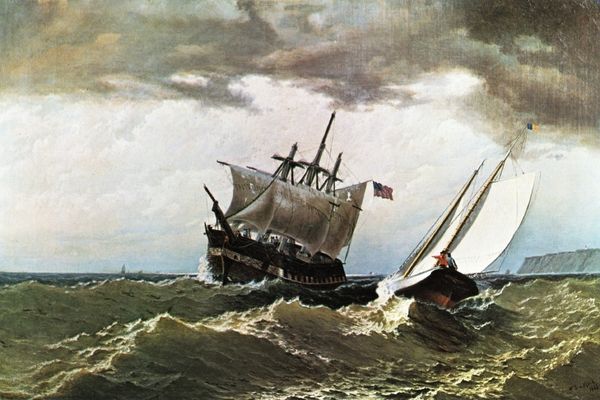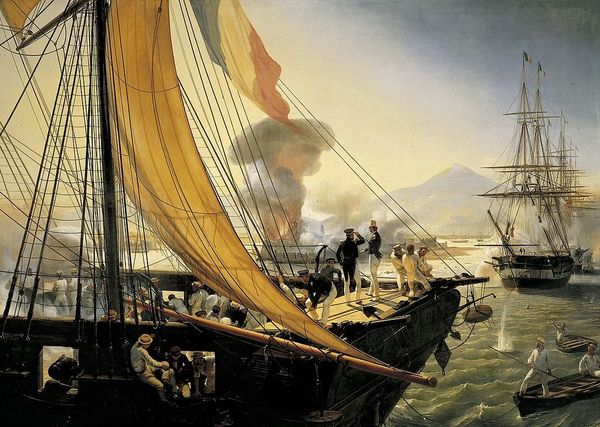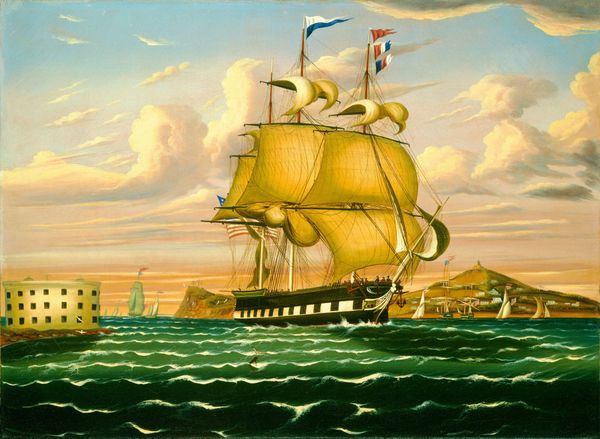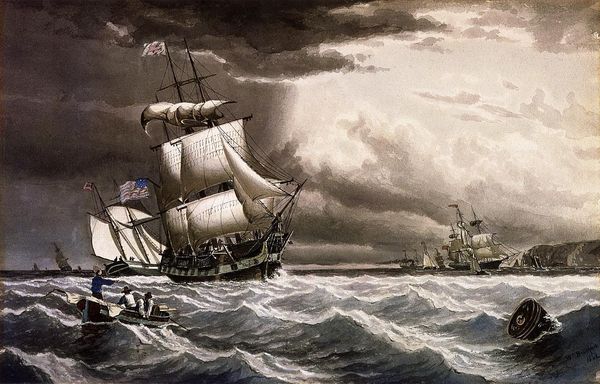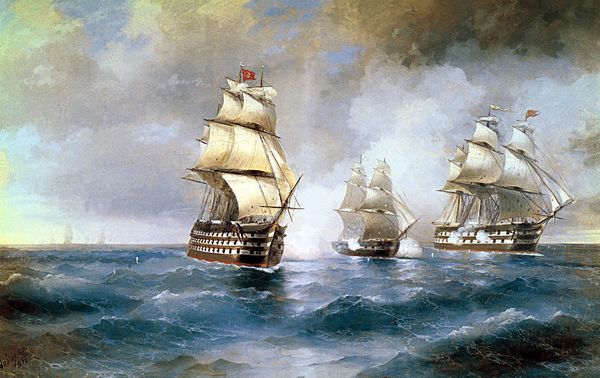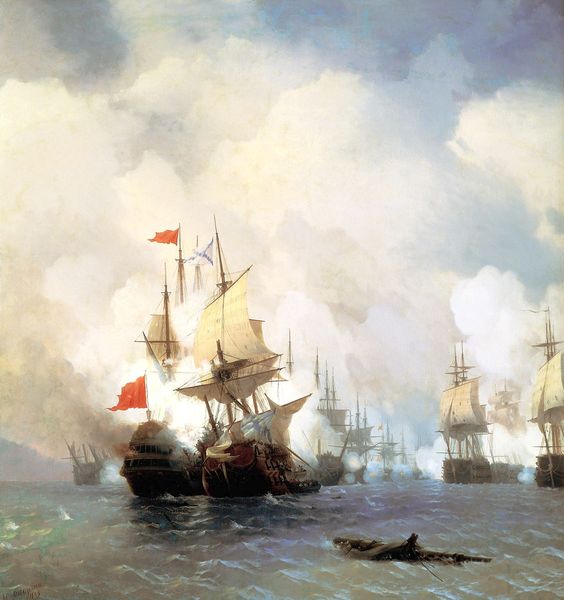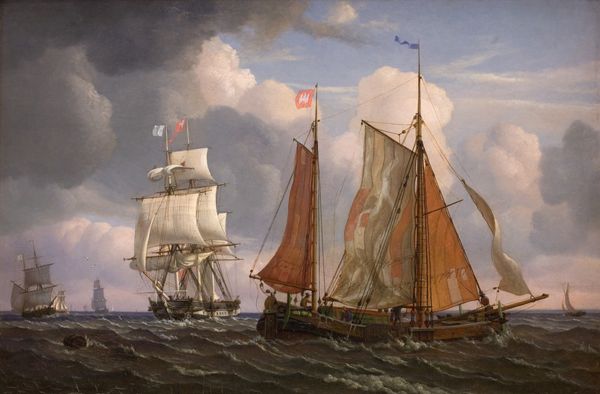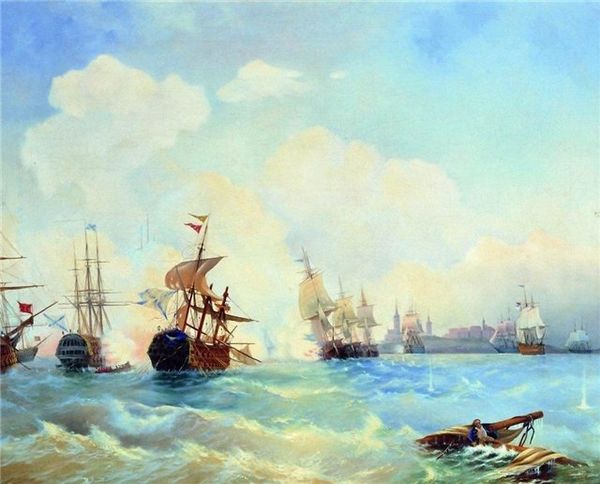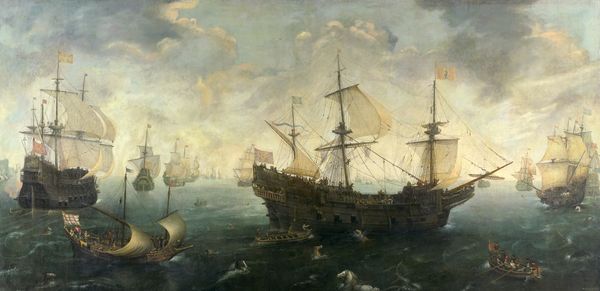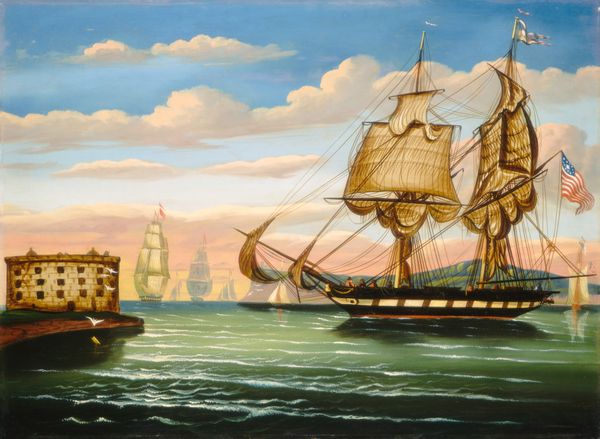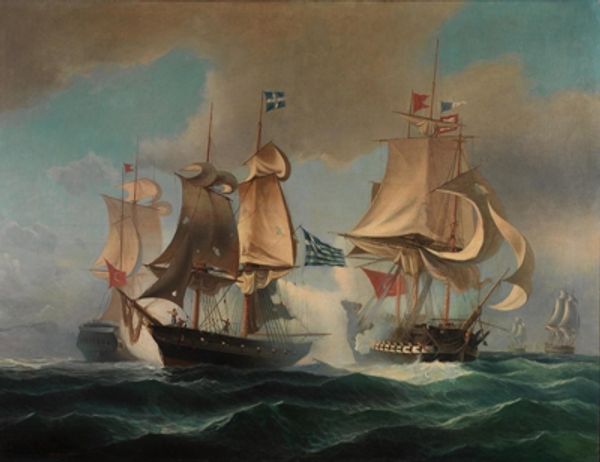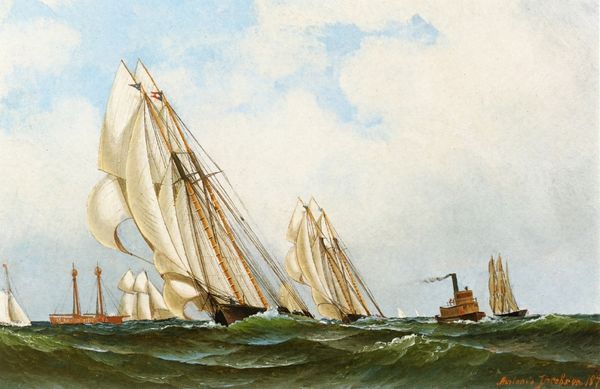
painting, watercolor
#
baroque
#
ship
#
painting
#
landscape
#
watercolor
#
water
#
line
#
history-painting
#
fantasy sketch
#
watercolor
Copyright: Public domain
Curator: Good morning. Here we have Eugene Lanceray’s watercolor painting, "The Ships of the Times of Peter I." Note the baroque stylings in the linework despite its designation as a landscape and history painting. Editor: There's an immediate energy to this. The choppy water, the looming ships, and the overcast sky...it feels ominous, like a storm's about to break. Curator: Precisely. Lanceray masterfully uses line and color to establish depth, observe the detail, and how the lines on the ship are used to convey volume and three dimensionality to suggest depth. The watercolor medium allows for fluidity, reflecting the ever-changing nature of the sea. Editor: And consider the materials used here: watercolor on paper. Think of the labour involved in shipbuilding versus the relative ease and speed of watercolor painting. There's an interesting contrast in materiality and scale. This painting documents objects, that embody power and wealth through meticulous construction, while water represents freedom. Curator: Indeed. The formal arrangement, this contrast creates tension between historical record and artistic interpretation, between material permanence and ephemeral representation. I mean observe the use of Baroque art, that typically embraces energy, but here it is depicting ships—which by its very nature has its own power Editor: These ships weren’t constructed in a vacuum. Each one demanded a workforce, from lumberjacks felling trees to carpenters shaping hulls and sailmakers weaving canvas. This artwork serves as a silent testament to all those hands involved in the expansionist agenda under Peter I. Lanceray’s choices illuminate how those actions have made marks on labor, resource use and exploitation of freedom Curator: I see what you are saying, the human costs inherent to progress but regardless, note how this historical depiction still reflects the timeless interplay of form and representation, structure, and deconstruction that embodies the very best work across artistic eras. Editor: Yes. In contemplating the process of historical interpretation, both Lanceray’s act of creation, as well as how materials shape narratives. It is so striking that even through our discussions here, and after its creation we still breathe context and materiality back to these historical moments and the art these people create Curator: I concur. A very astute understanding of it all. Editor: Agreed.
Comments
No comments
Be the first to comment and join the conversation on the ultimate creative platform.
